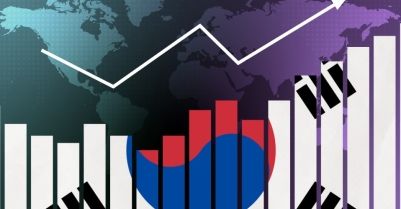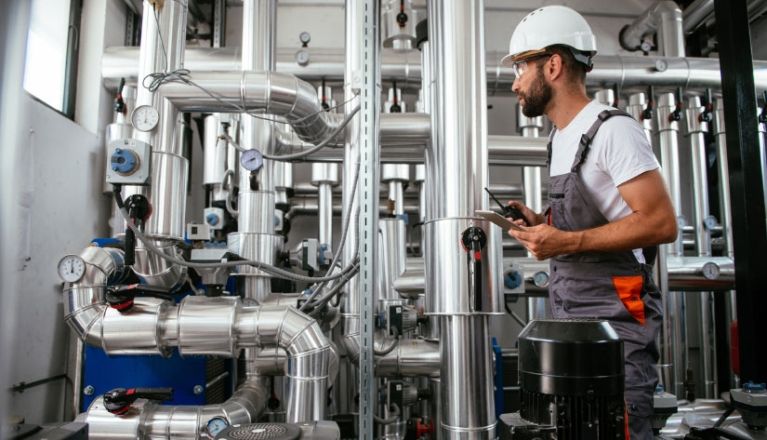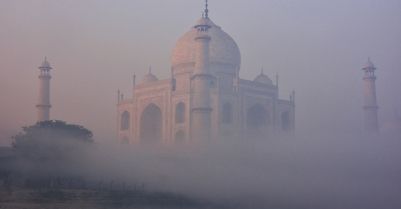-
View article
 #Economy
#EconomySouth Korea: a year after the political crisis, markets are buying the promise of stability
2025/12/17

Producing and distributing renewable heat is one of the strategic elements of France’s energy transition
France’s energy transition, launched by the 2015 Energy Transition for Green Growth Act1, fundamentally rests on three key pillars: frugality, energy efficiency and the development of renewable energy in the form of green electricity, heat and gas. Renewable heat can be produced using a range of technologies including geothermal energy, thermal solar energy, waste or wood combustion, biogas cogeneration, heat pumps and waste heat recovery2. The objectives set out in France’s Multi-Year Energy Plan – one of the tools used to manage and monitor the country’s energy transition – include a target of renewable energy accounting for 38% of final heat consumption by 2030. In particular, the quantity of renewable heat produced could reach between 218 and 247 TWh in 2028, compared with 141 TWh in 2019. This will require considerable effort. To support the sector, the heat fund set up by French environment agency ADEME in 2009 has invested almost €900 million over 11 years to bolster the creation, greening and extension of over a thousand heating and cooling networks. These networks constitute key infrastructure for distributing “green” heat to end users; they have a key role to play in the quest to achieve carbon neutrality.
Did you say heat networks?
A heat network consists of three main components. The first is the heat generation plant, a centralised heat production system consisting of one or more boilers. The second is pipes carrying a heat transfer fluid (in the form of water of water vapour heated to between 60°C and 300°C depending on end use). The third is substations, which consist of heat exchangers that deliver heat either to a single building or to a group of buildings managed by the same entity. Once its heat has been transferred at a substation, the cooled heat transfer fluid flows back to the heat generation plant. Heat networks thus operate in a loop.
Varying levels of “greening” from region to region
At the end of 2019, heat networks in mainland France on average derived 59% of their heat from renewable energy and recovery of energy by-products. Heat networks are much more developed in some regions of France than others. The Île-de-France region has a network with a total length of 1,854 km, by far the longest of any region. However, only 53% of its heat is derived from renewable energy and recovery of energy by-products. Only in the Hauts-de-France region is this proportion lower still (39%). Brittany (78%), Occitanie (76%) and Pays de la Loire (73%) are the regions with the greenest heat networks.
Speeding up development
In 2019, according to non-profit organisation Amorce and Syndicat National de Chauffage Urbain (SNCU), 798 heat networks (up from 781 a year earlier) derived an average of 59.4% of their heat from renewable energy and recovery of energy by-products, up from 57.1% a year earlier. That same year, heat networks delivered around 25.6 TWh of heat to a total of 40,993 buildings or 2.37 million equivalent residential units3. The pace of development of heat networks is still going to have to increase considerably to achieve the Multi-Year Energy Plan target of delivering 39.5 TWh of renewable and recovered heat by 2030. To speed up the delivery of future projects, local authorities must make it a strategic priority to green their heat networks while contracts are still running rather than waiting for them to come up for renegotiation. Efforts must also be made to step up the development of cooling networks, with a target of delivering 3 TWh by 2028. With an ageing population and heat waves set to become increasingly frequent, this is no longer simply a question of comfort: it is a genuine public health issue. Lastly, external factors like competition from fossil fuels (particularly natural gas, which is still cheap), the evolution of the carbon tax and electoral timetables4 all have a big impact on heat network projects. The new 2020 environmental regulations for new buildings, due to enter into force in January 2022, are aimed at making buildings more energy efficient, reducing the carbon impact of construction and promoting buildings adapted to future climate conditions. These regulations include a specific regime to encourage the development of heat networks – “a strategic priority within the national policy of achieving low-carbon heating in buildings”, according to the French Government.
Strasbourg’s R-PAS waste heat network project: a virtuous industrial ecology model
Taking heat networks to the next level will also mean harnessing waste heat, which offers substantial potential. ADEME estimates that the industrial sector generates 109 TWh of waste heat, the equivalent of around 36% of the total amount of fuel consumed by industry5.
Launched in 2015 as part of a partnership between Strasbourg’s independent port authority and energy supplier R?CUA, the R-PAS project aims to recover waste heat from various production sites by exporting it to nearby neighbourhoods through new or existing urban heat networks. The total investment required by the project is €27 million, and R-PAS is eligible for €11 million from ADEME’s heat fund. In 2021, R-PAS will be able to supply 45-50 GWh of carbon-free renewable heat, thus avoiding 15,000 metric tons of CO2 emissions. As new sources of waste heat are connected in the future, the network should achieve a total capacity of 160 GWh, equivalent to the consumption of 35,000 new homes. R-PAS is thus fully consistent with the Strasbourg Eurometropolis’s stated aim of sourcing 100% of its energy from renewables and recovery by 2050. This iconic industrial ecology project involves a varied ecosystem of stakeholders and demonstrates the clear relevance of heat networks in support of local, collaborative energy transition.
David Balussou, Group Strategic Domains / Senior Energy Advisor
1 Loi relative à la Transition énergétique pour la croissance verte (LTECV) of 17 August 2015
2 Waste heat consists of “unavoidable” discharges of heat from drying processes, refrigeration systems, residual heat from ovens and smoke from boilers and compression systems.
3 An equivalent residential unit is a unit of measurement corresponding to the amount of energy consumed by a home with four occupants measuring 80 square metres.
4 It takes several years to build or renovate a network, and decisions are often made at the beginning of an electoral term.
5 Excluding the use of fuel as a raw material but including the refining sector.








